Description
Steel guard with distinctive “flint-knapper” quillons of inline hammer and screwdriver form in
the Germanic style. This made the plug bayonet more of a utilitarian tool, the German
examples being more robustly made than their French counterparts. Dark hardwood grip
with brass base ferrule, topped by a brass pommel with button. Double-edged 10 1/4″
blade of hollow-ground triangular section, with forging flaw or period repair 1 1/4″ from the
guard. Steel parts with pitting and dark rust patina. Overall length 16 1/4″.
Though probably originating around 1550, the plug bayonet had a relatively short span of
use from around 1650-1720 (except in Spain where they were used into the 19th C). Their
rise in popularity largely paralleled the development of standing armies in Europe, which
were realizing the importance of the musketeer, while at the same time not wanting to
wholly abandon the pike. In this sense the plug bayonet can be considered a transitional
weapon. However, despite its use as a dagger on its own, it was soon found to be
impractical since it’s use prevented the musket from being fired. Countless soldiers also
found great difficulties in removing a stuck plug bayonet from the muzzle, rendering the
musket useless as a firearm. Many were damaged while being removed and as a result
relatively few survive. For these reasons it was soon superseded by the socket bayonet,
which did not affect the musket’s ability to fire and could much more easily be removed.

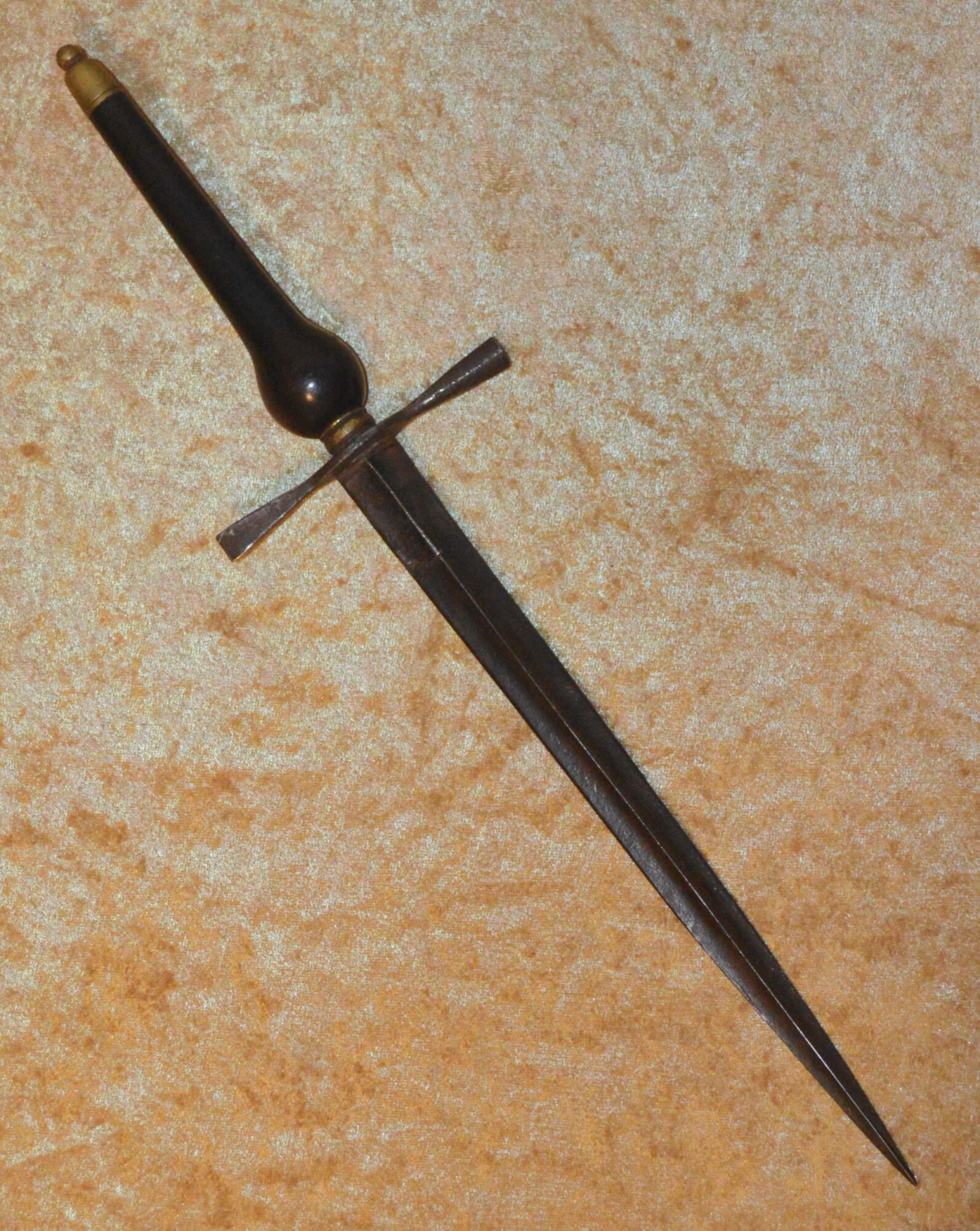
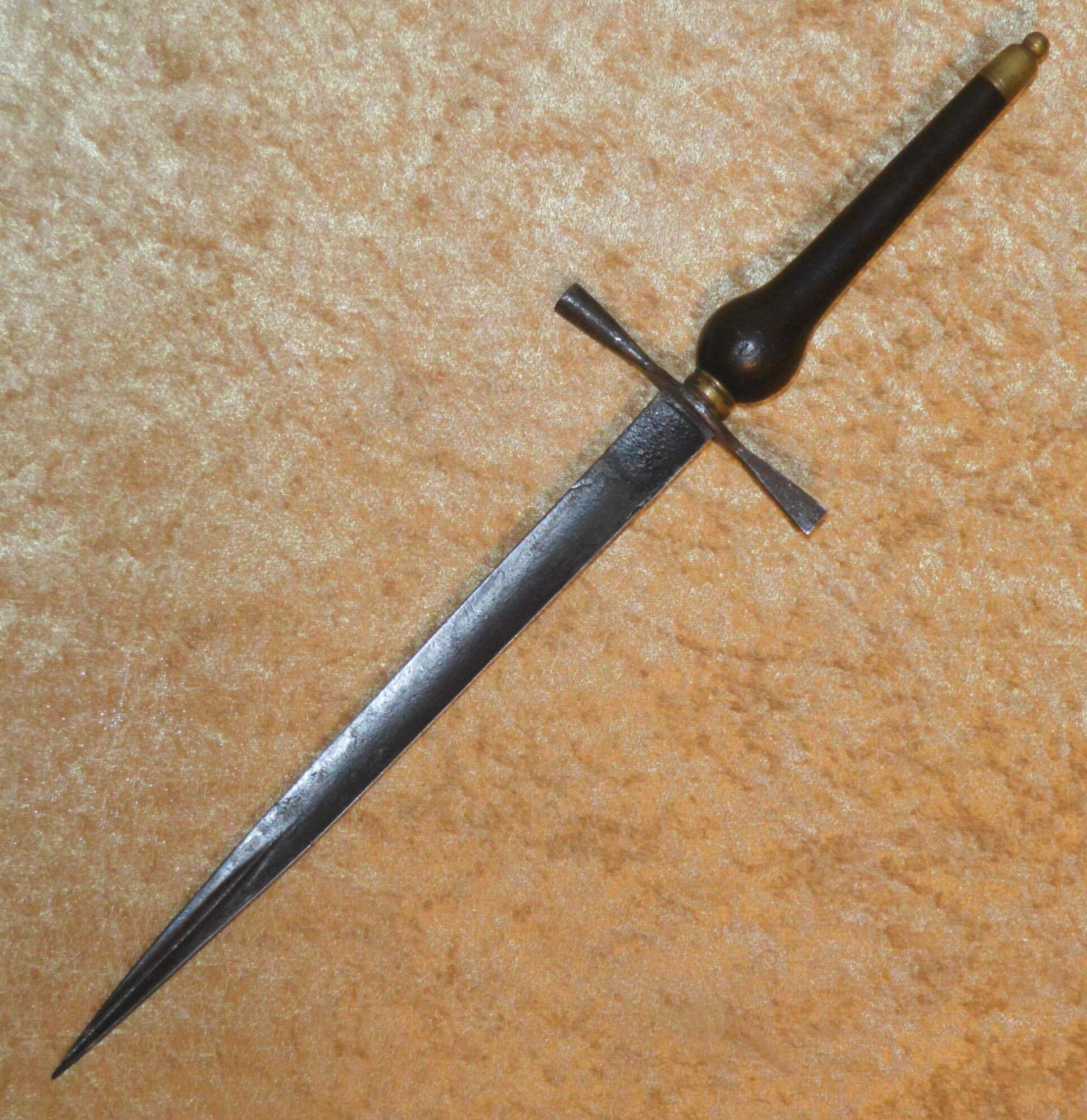
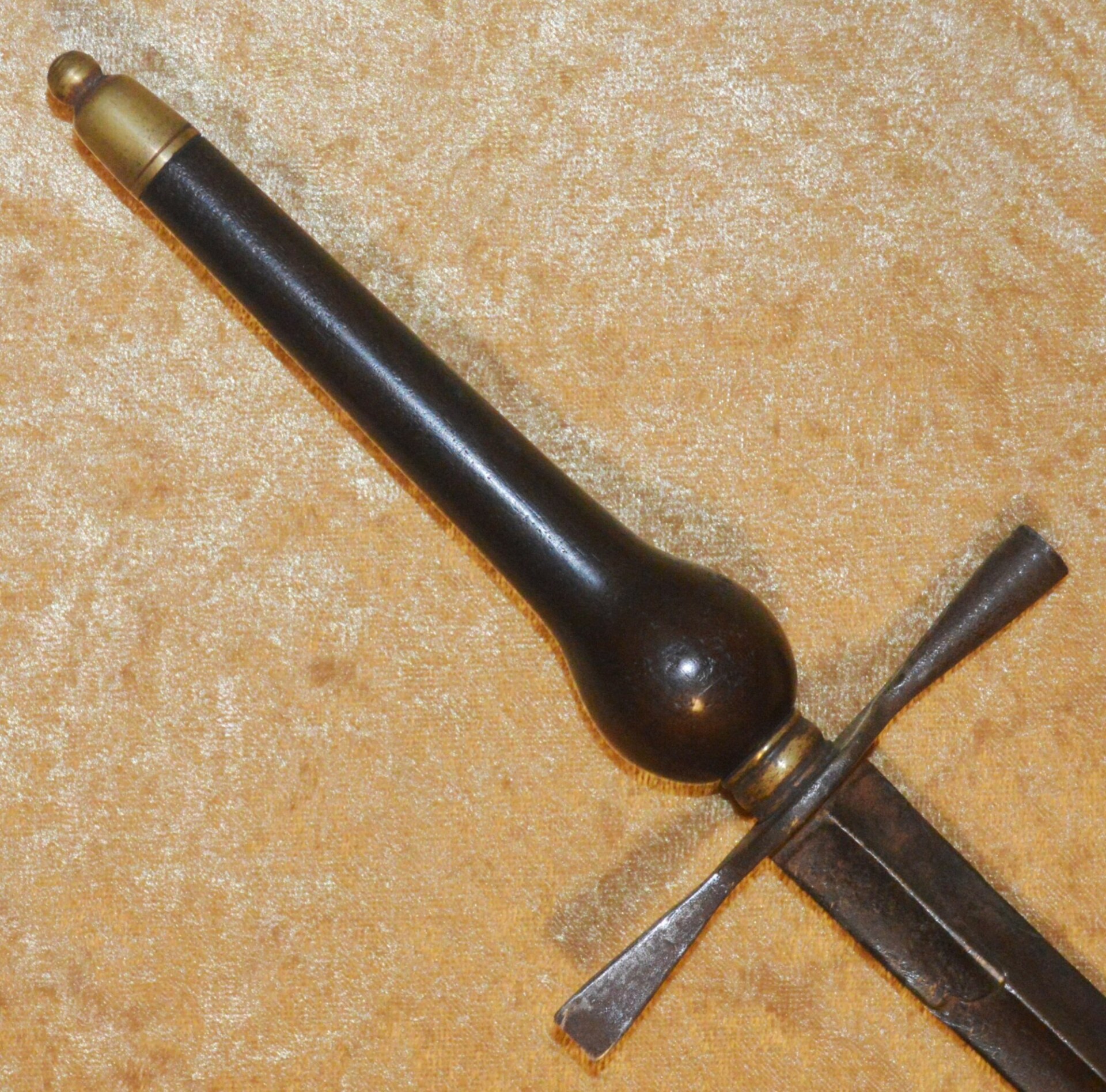
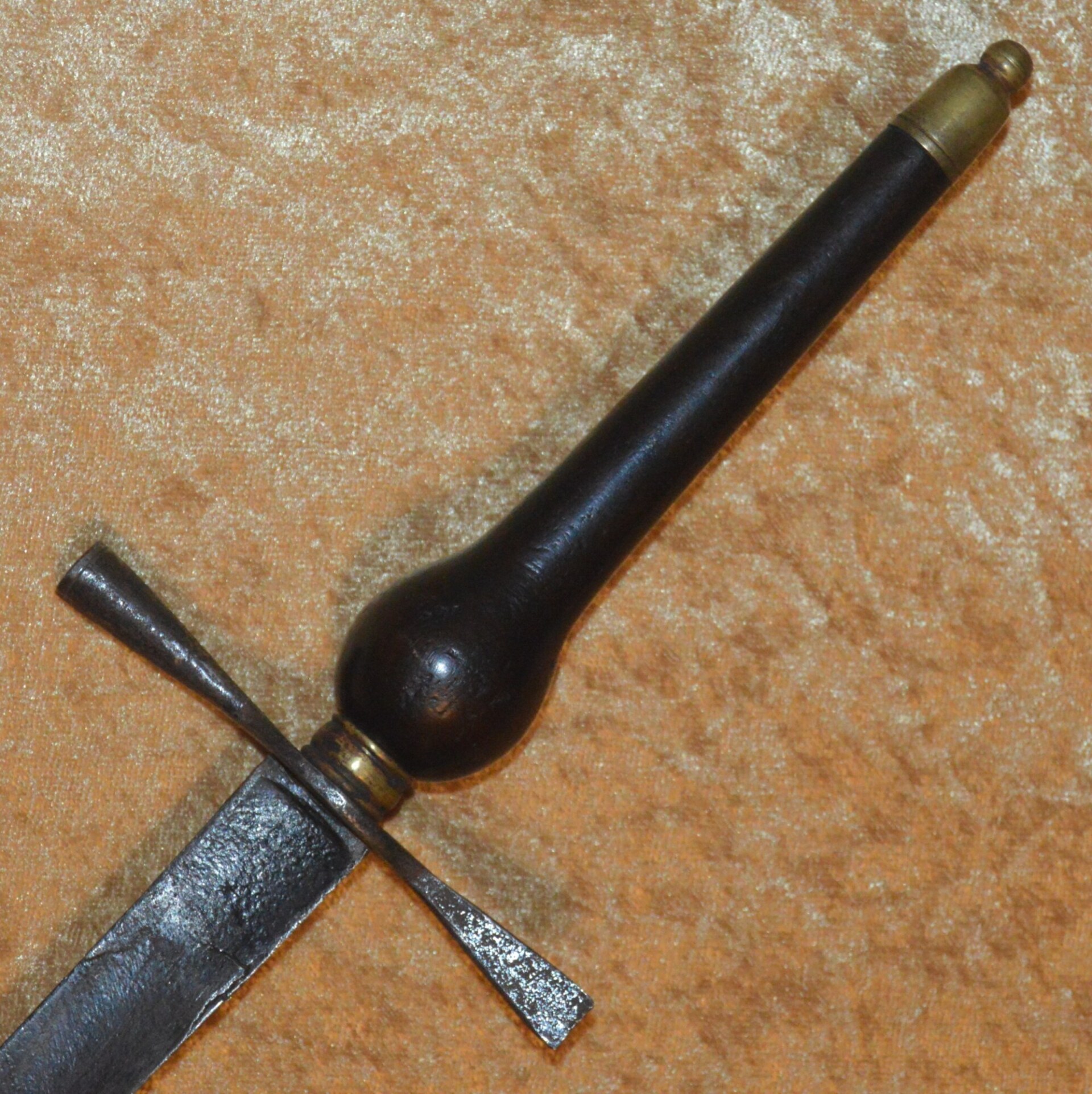
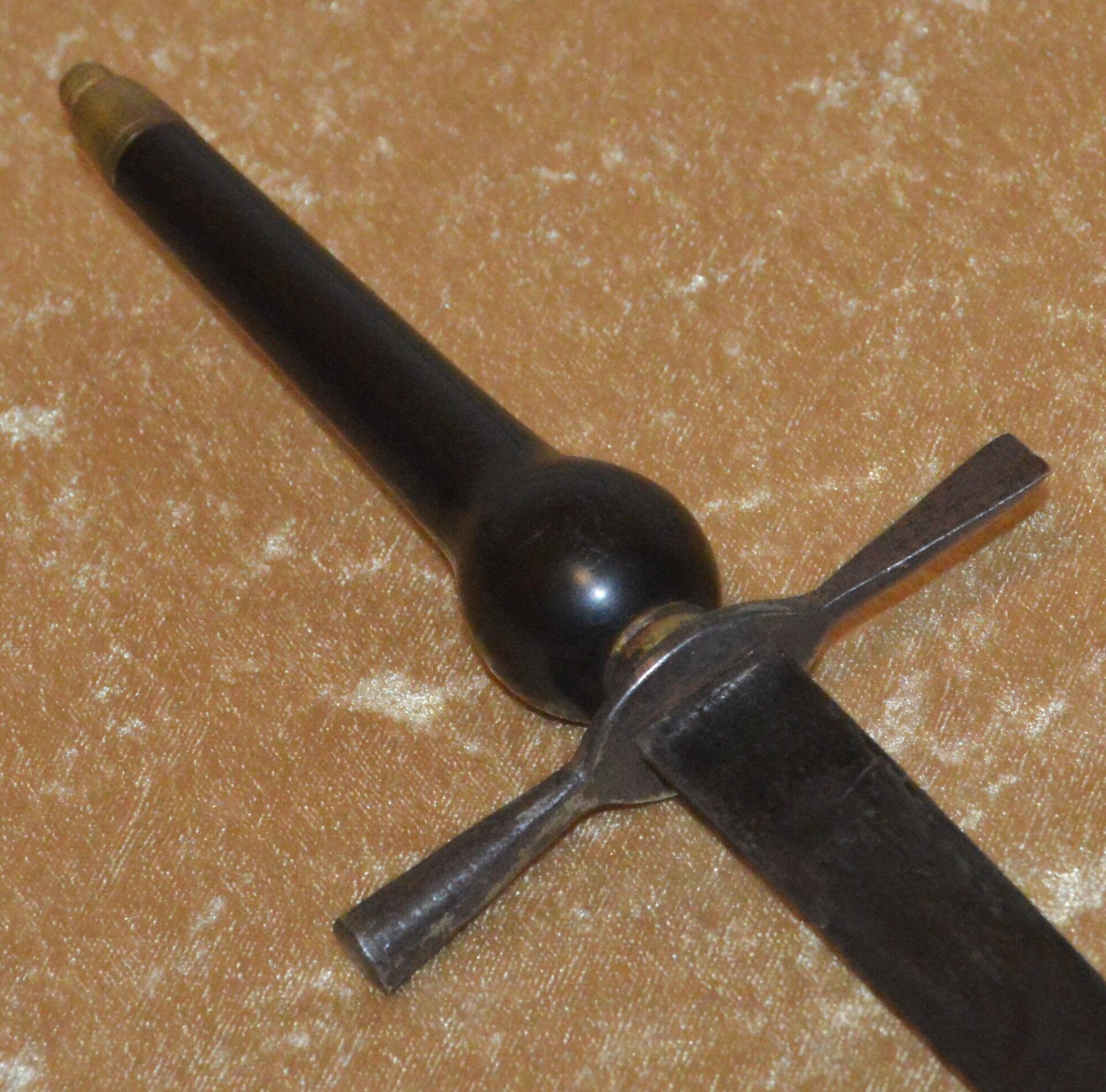

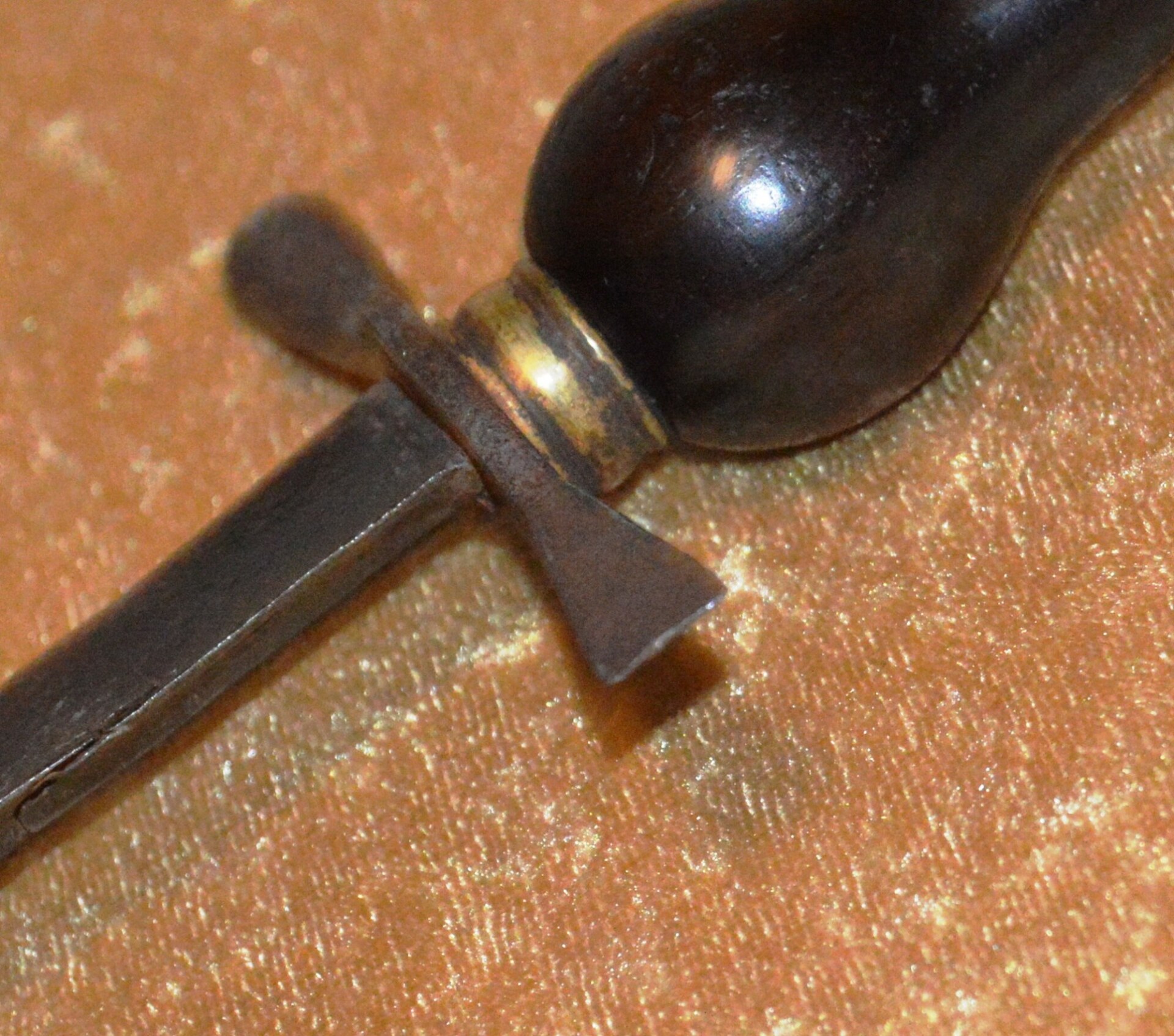

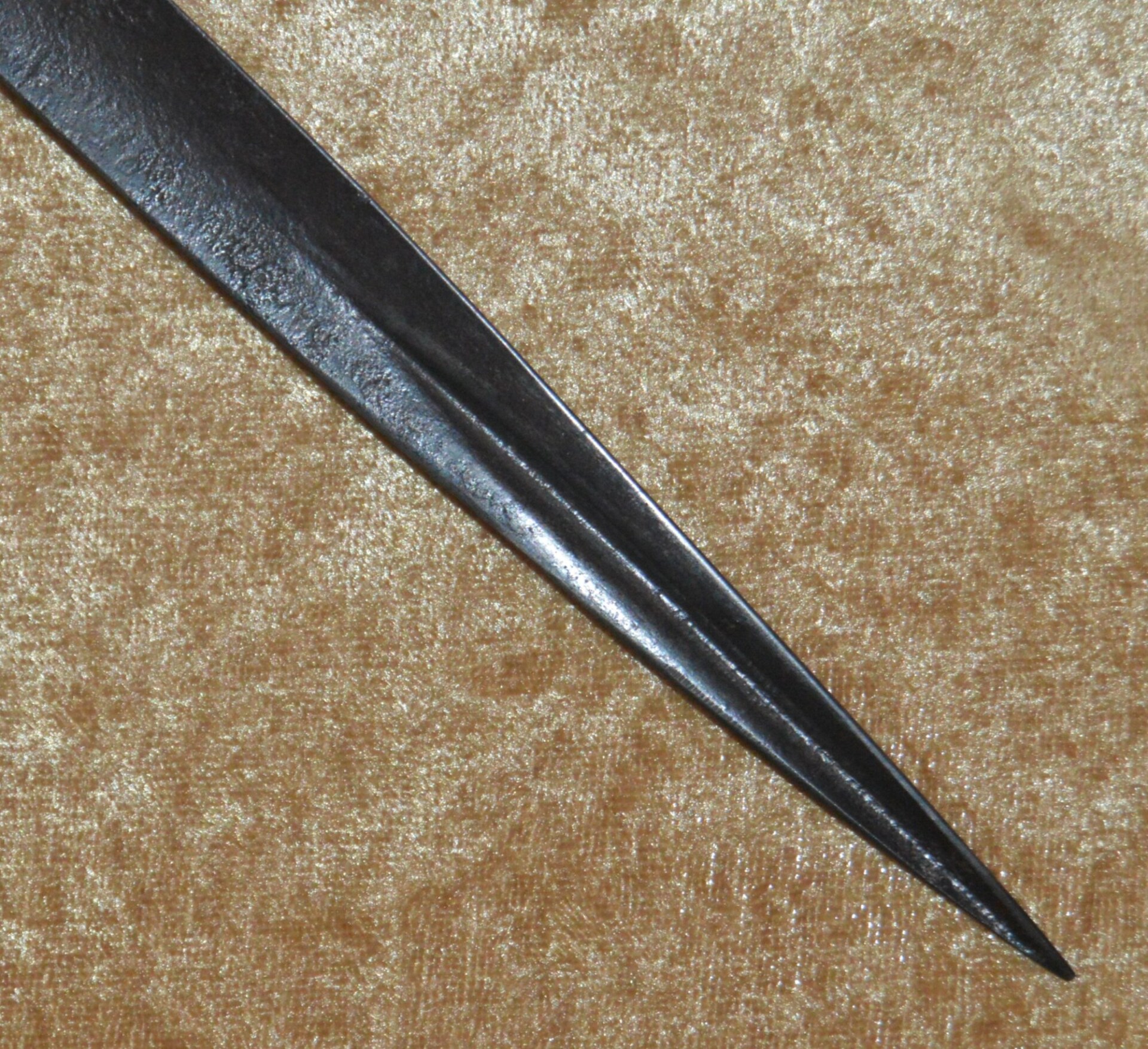
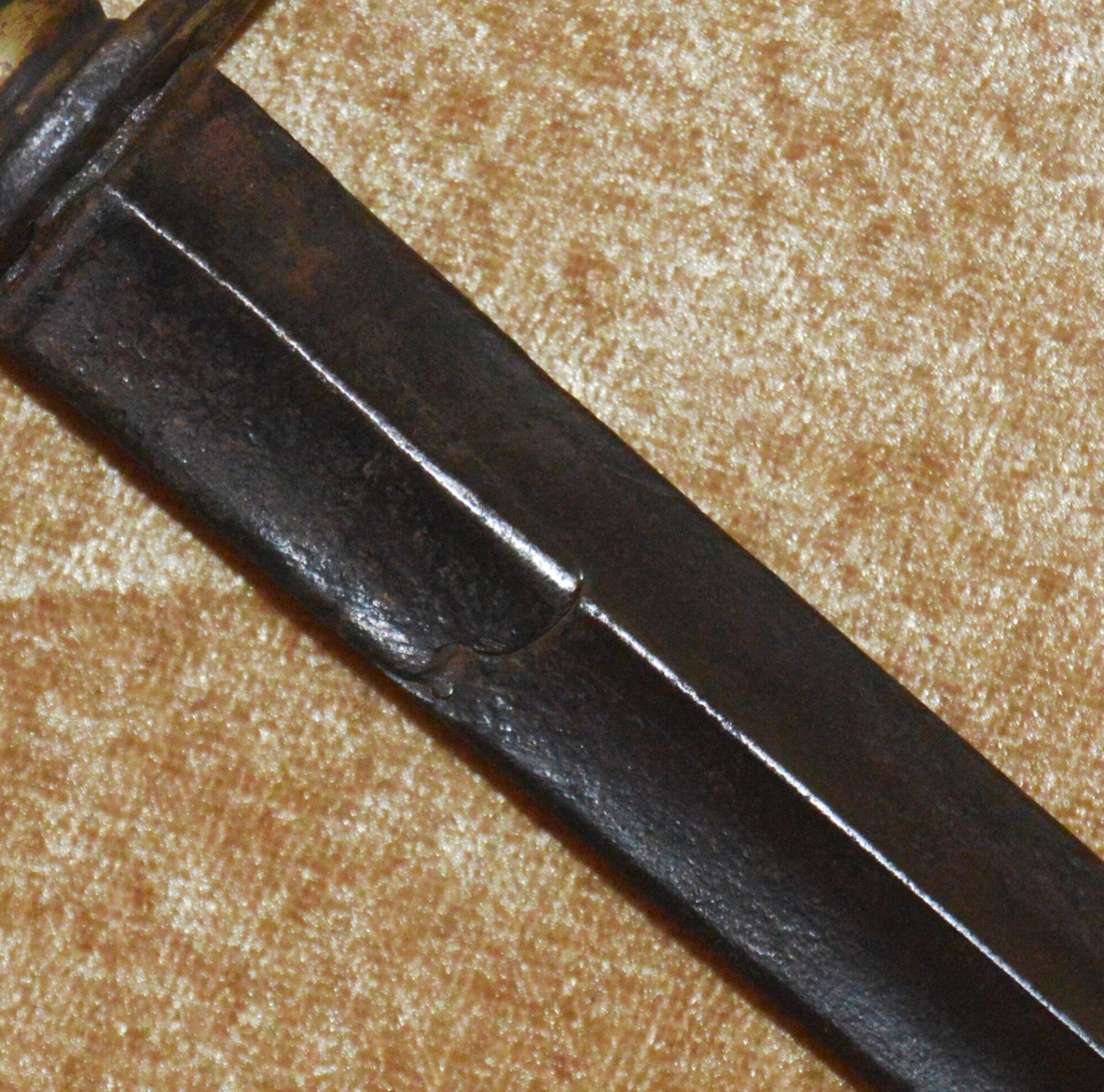
 Stiletto Dagger, First Half 17th C, German or Italian
Stiletto Dagger, First Half 17th C, German or Italian 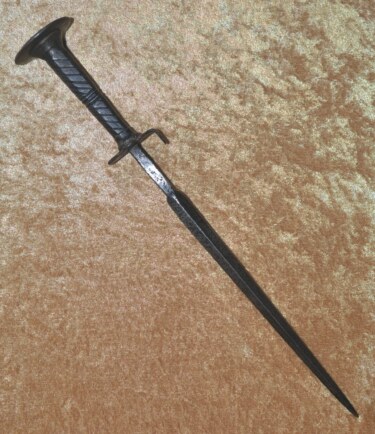 European Rondel Dagger, Misericorde, Late 14th C
European Rondel Dagger, Misericorde, Late 14th C 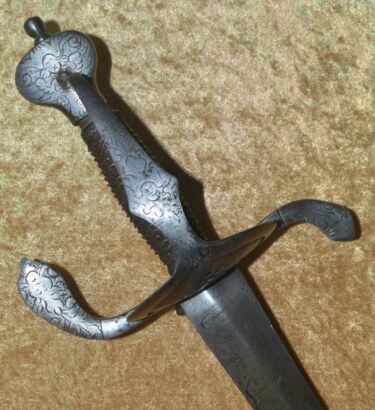 Swedish Officer’s Broadsword, ca. 1630, Thirty Years War
Swedish Officer’s Broadsword, ca. 1630, Thirty Years War 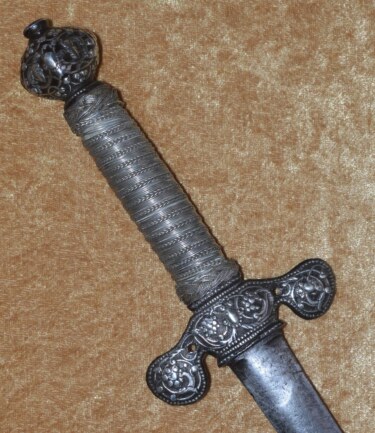 Silver Inlaid Pillow Sword, ca. 1660, Probably English
Silver Inlaid Pillow Sword, ca. 1660, Probably English